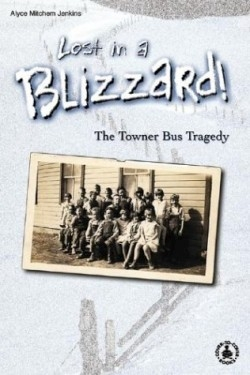
Lost in a Blizzard
The Towner Bus Tragedy
A swirling white enemy trapped the children on the cold little bus. But snow kept invading it. There was no escape.
The chilling, true story of school children trapped in a terrible snowstorm begins on March 26, 1931. Parents and a bus driver responsible for twenty youngsters from seven prairie families on the border of Colorado and Kansas had no way of knowing that the falling snow would become a killer blizzard. Worried teachers, watching the darkening sky, quickly dismissed school as soon as the children arrived in the morning. Without communication, parents thought their children were still at school.
As bus driver Carl Miller began the drive home, he made a fatal error. He took a shortcut across fields and became lost in the whiteout. His passengers were dressed for spring-like weather, not frigid temperatures. He tried to keep them warm and moving, but snow entered the broken windows of the makeshift, unheated bus. Miller headed out on foot to seek help but died in the storm. His daughter was among five students who perished on the bus. Many survivors of the thirty-three-hour ordeal had hypothermia by the time their parents realized they were missing and found the bus.
The author includes photographs of the children, the school, and life on the prairie. Her text is sprinkled with highlighted terms, which are explained in the glossary. Other aspects of prairie life are illustrated with text and pictures; the design elements are often distracting because they interrupt the story.
Jenkins does not flinch from the harsh reality of the victims’ injuries and deaths. Her interviews with survivors add credibility, as she explains how they handled their ordeal and what happened later. They were treated as celebrities while they slowly recuperated; one boy was even invited to the White House.
With today’s sophisticated weather forecasting and easy communication, it may be difficult for youngsters to imagine how a school bus could be lost for so long in a storm. A sidebar compares weather forecasting capabilities in the 1930s and today. Jenkins gives good advice about what to do in a blizzard, and notes that Miller broke the most important rule by going outside.
The book is part of an environmental series on natural disasters-subjects that fascinate elementary school readers.
Disclosure: This article is not an endorsement, but a review. The publisher of this book provided free copies of the book to have their book reviewed by a professional reviewer. No fee was paid by the publisher for this review. Foreword Reviews only recommends books that we love. Foreword Magazine, Inc. is disclosing this in accordance with the Federal Trade Commission’s 16 CFR, Part 255.
